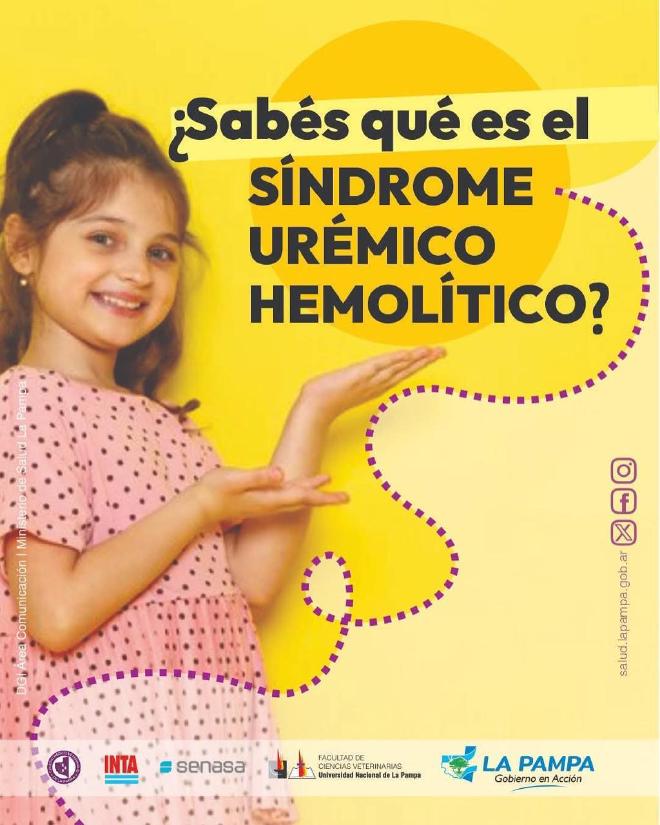

HUS is a serious pathology that primarily affects girls and boys under five years of age, although it can also occur in older adults, people with immunodepression, and pregnant women. It is transmitted through food contaminated with a strain of the bacterium Escherichia coli, which produces a toxin that is often found in the fecal matter of animals and people.
According to data from the Ministry of Health of the Nation, in Argentina it is the main pediatric cause of acute renal failure, the second of chronic renal failure, and is responsible for 20% of kidney transplants in children and adolescents. “It is a serious endemic disease, with a higher occurrence in the warm months,” said Patricia Estrella, head of the Epidemiology Department, to the La Pampa’s Provincial News Agency.
Estrella also stressed the importance of recognizing warning signs, noting that the most frequent symptoms include fever, vomiting, and diarrhea - sometimes with blood in the stool - irritability, weakness, drowsiness, decreased urine production, paleness, bruising, subcutaneous hemorrhages, and yellowing of the skin.
“In the presence of these signs in children under five years of age, it is recommended to go to the doctor immediately. The treatment, once HUS is diagnosed, consists of supportive measures adapted to the age, severity, and tolerance of each patient,” Estrella stated.
Prevention: the most effective tool #
The official concluded that adopting simple habits can make a difference: “cooking meats well until they lose their pink color, avoiding cross-contamination between raw and cooked foods, storing food in covered and separate containers, washing hands before and after handling food or animals, maintaining the cold chain, consuming potable water and pasteurized dairy products, and washing vegetables with safe water. Furthermore, it is recommended that children do not consume homemade processed meats and that swimming pools are properly chlorinated. Information is the best tool for making good decisions. That is why we also work from the Provincial Zoonosis Board in order to strengthen the community and health teams”, she said.
Progress and challenges in treatment #
Pediatric nephrologist Pablo Bonany explained that there is still no specific medication to cure typical HUS: “Unfortunately, we still do not have a medication that cures typical HUS associated with Shiga toxin-producing Escherichia coli. Monoclonal antibodies such as eculizumab have been tested, which are useful in atypical HUS, but without satisfactory results in typical HUS. Nor did the equine hyperimmune anti-Shiga toxin serum demonstrate sufficient efficacy. Therefore, the cornerstone of management remains early intensive support and the correct approach to bloody diarrhea.”
Dropping birth rates and meat consumption #
Regarding the evolution of the cases, Bonany pointed out that there is a downward trend: “In the last 10 years, at the national level, the average went from 400 annual cases to approximately 300, and in the province of La Pampa from 10 to 5 cases per year. This decrease is mainly explained by demographic and economic factors: a reduction of more than 25% in the birth rate and a drop of nearly 40% in the consumption of beef. Therefore, it is essential to maintain and reinforce prevention campaigns like this one to avoid new cases.”
La Pampa Protocols #
La Pampa applies a specific protocol for bloody diarrhea that includes rapid detection of STEC by real-time PCR (24–36 h) and an immunochromatographic blood test useful from the third day of bloody diarrhea. “This allows for early therapeutic decisions: volume expansion, rational initiation of azithromycin, and referral according to evolution,” explained Bonany.
Finally, Bonany emphasized that HUS can be prevented and its severity can be reduced if the consultation is immediate upon detecting bloody diarrhea in the child. “Having a quick diagnosis and applying early interventions improves the evolution of patients,” he concluded.
Contact [Notaspampeanas](mailto: notaspampeanas@gmail.com)

